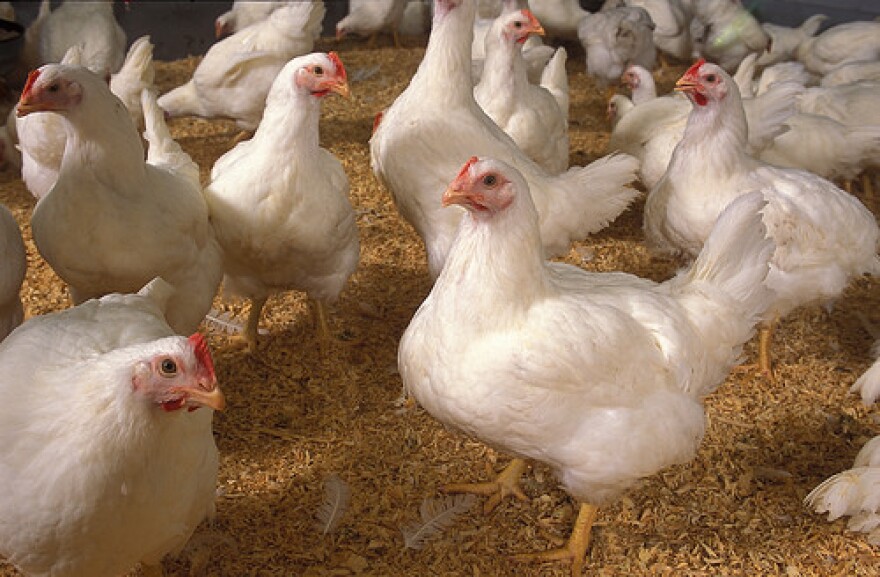The chicken industry is working to be more transparent to how chickens are produced. The National Chicken Council came up with “chicken guarantees” to help consumers feel more comfortable about their food and hold the industry to a standard.
The United States produces more chickens than any country in the world according to the U.S. Department of Agriculture. But recent trends show consumers are more concerned about where their food comes from and how it got to their plates.
Tom Super, the senior vice president of communications of the National Chicken Council said there are now the chicken guarantees to try and dispel public misperceptions about the poultry industry.
“No matter where they buy it, whether it’s organic conventional etc. there’s four things that always hold true. The first is that the chicken is always free of added hormones and steroids, it’s been banned by the FDA since the late 1950’s,” Super said. “The broiler chickens are always raised cage free, farmers are always trained in animal welfare and flocks and always monitored by licensed veterinarians. So those four things serve as a bench mark for all chicken meat welfare standards in the U.S.”
Antibiotic use in chicken is another concern for scientists and the public. Super said antibiotics are not used to promote growth and any antibiotic residue is gone by the time the chicken goes to the market. He’s said you can buy organic or conventionally raised chicken too. But Maryn McKenna, the Author of “Big Chicken” said it goes beyond that. Antibiotics kill bacteria, but the bacteria that survives reproduces to make more bacteria with antibiotic resistant traits, making it harder for animals to recover from diseases.
“Chicken essentially taught the rest of livestock agriculture how to use and misuse antibiotics,” McKenna said. “But because of the moves of some forward thinking companies like Purdue Farms, chicken is now leading agriculture in reversing that historic mistake.”
McKenna said you can’t completely remove antibiotics right now, but companies can use less by finding other ways to support the immune systems of poultry.
“And that means they do things as varied as using more vaccines, keeping their barns more clean, improving the diets of the animals so that the immune systems, their metabolisms are not so stressed,” McKenna said. “There’s not so much of a metabolic load to digest their feed. In many cases companies are moving towards other kinds of supplements. Such as giving herbs, or metals, or organic acids in the feed. All of these are things that support the immune system but don’t have the killing effect of the antibiotics. All of those other improvements have to go hand in hand with removing antibiotics because just removing antibiotics by themselves is not a panacea. The overall point has to be to find other ways to improve animal health.”
The poultry industry is moving in the right direction according to McKenna but there is still room for improvement.


